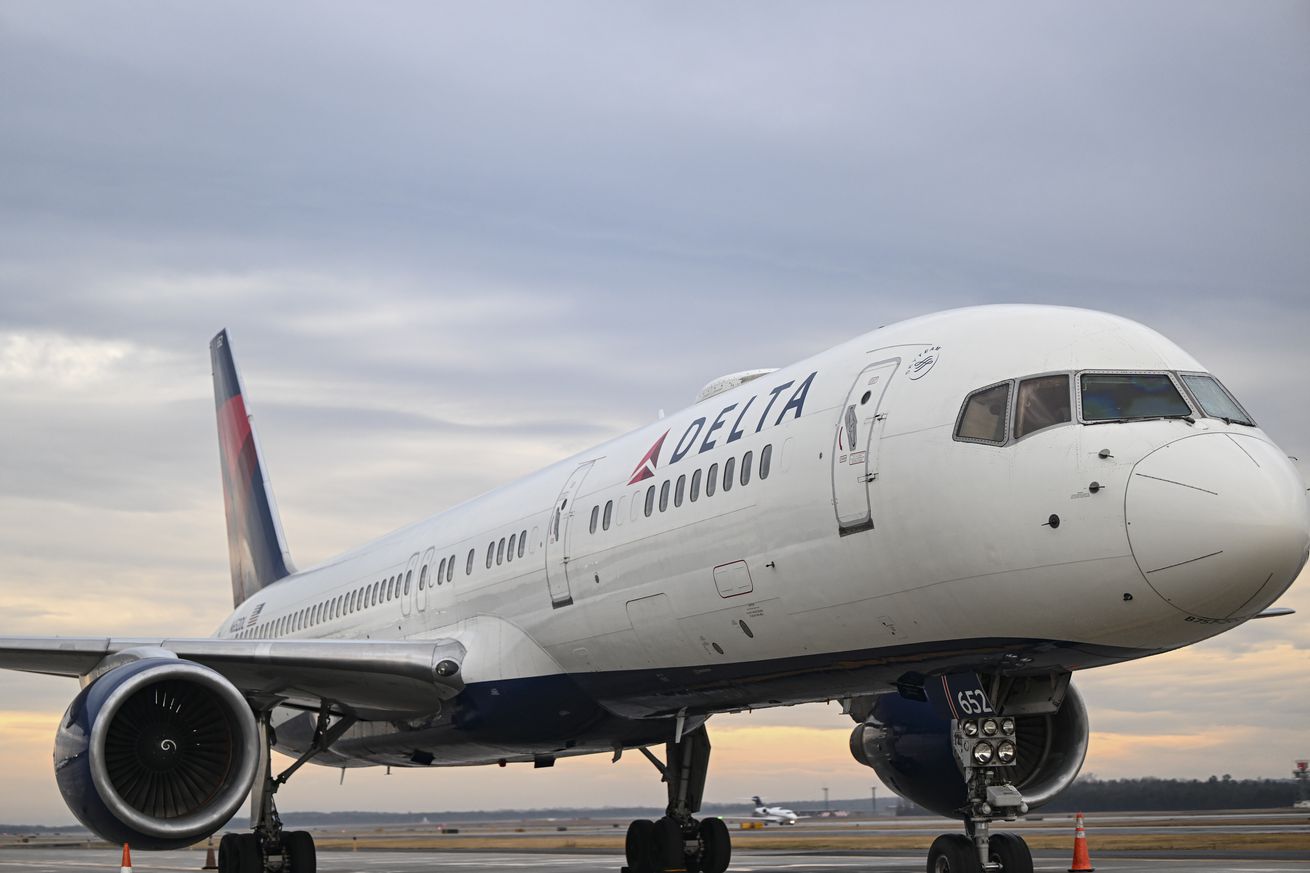
Delta Air Lines lays out its plan to leave fossil fuels behind
Delta Air Lines laid out a new plan to wean its planes off fossil fuels in an effort to address climate change. The goal, the airline said, is for sustainable aviation fuel (SAF) to make up at least 95 percent of its fuel consumption by 2050.
SAF is made from waste or crops through a process that’s supposed to cancel out much of the greenhouse gas emissions a plane produces. It’s not a perfect system and could create new environmental problems. And with very little SAF produced today, it’s going to be an uphill climb for Delta to hit its 2050 target. Nevertheless, SAF is largely seen by the industry as the most viable alternative to fossil fuels for now.
With very little SAF produced today, it’s going to be an uphill climb for Delta to hit its 2050 target
SAF is a biofuel made from plant or animal material. A plane running on SAF will still produce planet-heating carbon dioxide emissions, but the aim is to cancel out a lot of that pollution in the way the fuel is produced. If it’s made from plants like corn or soybean, the climate benefit is supposed to come from photosynthesis. The plants absorb carbon dioxide during photosynthesis, which is supposed to remove some of the pollution that comes from burning fuel. When SAF is made with food waste or other organic matter in trash, the climate benefit is supposed to come from avoiding the greenhouse gas emissions that would have resulted from that food or waste ending up in landfills.
Airlines also like the idea that SAF can be used like traditional kerosene, without many changes to aircraft or fueling infrastructure. That’s not the case with electric planes or hydrogen jets. Aircraft running on hydrogen would have to be redesigned to accommodate larger fuel tanks. And batteries today are too heavy for electric planes to fly with them over long distances.
Delta is looking into those technologies, too. It’s partnering with Airbus to develop a hydrogen-powered plane and with Joby Aviation on electric air taxis for short-range flights. Delta says “revolutionary aircraft” should make up 25 percent of its fleet by 2050. Still, Delta says in its new sustainability plans announced yesterday that SAF “is at the forefront” of its midterm strategy.
Delta has so far committed to 200 million gallons worth of SAF offtake agreements with around 50 corporate customers. That’s still a drop in the bucket. The world doesn’t produce enough SAF currently to fuel Delta’s operations for even a single day, the airline said in its announcement.
The company has set incremental milestones on its way to reaching net-zero greenhouse gas emissions by 2050. By the end of the decade, Delta expects SAF to make up 10 percent of its fuel consumption and says that it’s already “halfway” to that goal. SAF usage reaches 35 percent by 2035 under Delta’s plan. Then, it has to make a big leap to more than 95 percent SAF by 2050.
The company hedges by saying it will need the help of policymakers and the rest of the industry for sustainable aviation fuels to take off. Building up supply chains for SAF and making it more affordable than traditional jet fuel will require more investment and demand.
All of these challenges make aviation one of the hardest sectors to clean up
On the other hand, skyrocketing demand for SAF could have detrimental side effects for the environment. Without reducing demand for air travel, feedstocks for biofuels could use up an area about as big as 19 percent of the world’s cropland today. That has some environmental advocates worried about how SAF could contribute to deforestation in the future.
All of these challenges make aviation one of the hardest sectors to clean up. Delta generated roughly 27 million metric tons of carbon dioxide in 2021, according to its latest ESG report. That’s about how much climate pollution 68 gas-fired power plants might create in a year. Jet fuel alone is responsible for 98 percent of Delta’s emissions, the company says.
Until recently, airlines including Delta have relied heavily on carbon offset schemes to deal with their pollution. With carbon offsets, companies typically pay to support forestry or other conservation projects to atone for their emissions. The idea is that trees and plants will capture climate pollution through photosynthesis.
The bad news is that carbon offset projects, often because of poor planning and management, consistently fail to actually reduce the amount of CO2 entering the atmosphere. In light of those failures, other airlines, including JetBlue, Air France, and easyJet, have also started to prioritize a transition to SAF.

